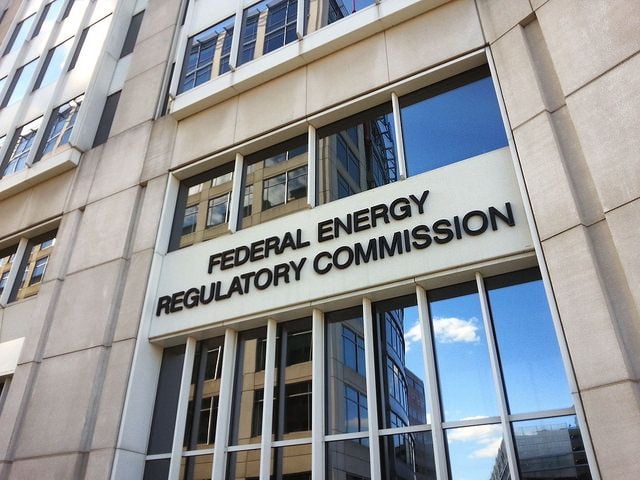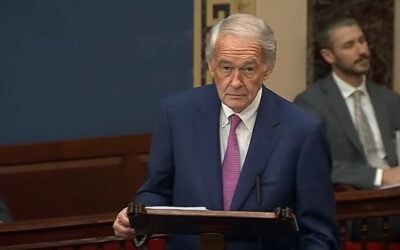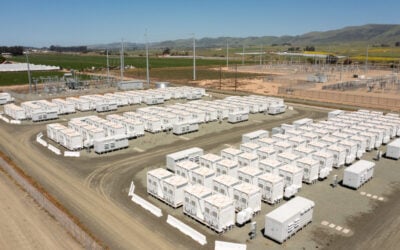
The “devil is in the detail” when it comes to making regulatory changes in the US to open up wholesale markets for energy storage to participate in, a regional chief of regulator FERC has said.
In mid-February, FERC (Federal Energy Regulatory Commission), issued Order no.841, a Final Rule on a Notice of Proposed Rulemaking (NOPR) which was first tabled in late 2016. It ordered US regional transmission organisations (RTOs) and independent system operators (ISOs) – the operators of the US’ transmission grids – to explain in the coming months how they would reconfigure wholesale markets to accommodate energy storage resources in providing capacity, energy and ancillary services.
Enjoy 12 months of exclusive analysis
- Regular insight and analysis of the industry’s biggest developments
- In-depth interviews with the industry’s leading figures
- Annual digital subscription to the PV Tech Power journal
- Discounts on Solar Media’s portfolio of events, in-person and virtual
The rule has been commented on by trade groups as a positive step, with the Energy Storage Association’s policy director Jason Burwen, having been among contributors to the regulator’s information-gathering and consultation process.
RTOs and ISOs have about a year to issue their plans. At last week’s Energy Storage Summit, which took place in London, Nancy Bowler, a branch chief at FERC, spoke briefly about the wholesale market ruling.
According to Bowler, US energy markets are divided up between not just the Federal and state level but also between wholesale and retail. The rule is an attempt to bring the two worlds closer together, opening up the opportunity for energy storage to provide capacity resources, trade energy or provide ancillary services including frequency response. The regulator also created a definition of energy storage as it relates to the electricity network.
“In the FERC Order we defined storage as a resource capable of receiving electric energy from the grid and storing it for later injection of electric energy back into the grid and this is going to be technology agnostic, it could be located on the transmission system, meaning the wholesale market, but also the distribution system and behind-the-meter,” FERC’s Nancy Bowler said onstage at the London event.
“We put out this rulemaking and these six regional organisations in the US have to come back with actual tariff language that adheres to the sort of broad-based parameters that we’ve put in place,” Bowler said, explaining that the six main RTOs cover about two-thirds of the US.
According to Bowler, the opening up of those three market areas, capacity, energy and ancillary services “really expands the place where storage can play in the US, pretty dramatically”.
Five-minute pricing
A key component of the rulemaking is that existing hourly real-time energy markets will incorporate five-minute pricing, balancing and settling the markets on a five-minute basis, something Bowler said would add a lot of granularity and visibility to the market.
“Up until now most of the value [of energy storage] has been in frequency regulation but energy arbitrage could potentially become a bigger deal, now you have this five minute pricing, more granular pricing that’s taking place,” Bowler said, adding that a recent MIT study found energy arbitrage in hourly markets with five-minute pricing could triple the value energy storage resources could provide.
Another panellist at the London event, a representative of UK aggregator Limejump said that such a scheme for pricing could give big generators incentives to manage their own frequency or balance their energy trading. Rob Sherwood, who is Limejump’s head of trading, said a five-minute rule in the UK could create “a much bigger market and much wider value”. From a technical standpoint, Sherwood said implementing this would merely be a question of creating a “suitable algorithm that could sort it out quite quickly”.
Indeed, in April last year, the Australian Energy Market Commission (AEMC), which is responsible for rulemaking and market development in the National Electricity Market (NEM) covering eastern and southern Australia, said it is also considering a move to five-minute settlement.
According to Bowler, FERC itself came to something of an impasse on the question of allowing distributed and behind-the-meter (BTM) resources to play into those wholesale markets. Bowler said this part of the Order 841 rulemaking process had been tricky.
“That last piece, where we’re going to allow storage behind-the-meter and on the distribution system to participate in wholesale markets is going to be particularly difficult. As part of this rulemaking we were originally going to issue something on aggregated distributed energy resources, but we’ve kicked the can down the road and we’re going to have a technical session in early April to discuss how we might also allow those type of assets to participate in wholesale markets.”
On a regional level, the likes of California’s CAISO has started programmes to procure distributed and aggregated BTM resources like energy storage and demand side response, although this is on a small-scale and at its early stages.
Brattle Group puts numbers on value
A recent report from consultancy firm Brattle Group said half the total value of energy storage could come from the wholesale market, if Order 841 and other moves that remove barriers to wholesale market participation for energy storage continue as planned.
“FERC’s order is an important step in unlocking the value in wholesale energy, ancillary services, and capacity markets,” the group said.
“However, to fully realize the value of electricity storage, including benefits related to reduced T&D costs and reduced customer outages, the FERC wholesale market reforms will have to be matched with similar efforts at the state regulatory level.”
The combination of state and national efforts to capture all possible value streams, Brattle Group wrote, could increase the market value of energy storage three to five times over.
FERC’s Nancy Bowler concluded her appearance in London with an assertion of how transformative she believed the new rules could be.
“I’m very bullish on these markets,” Bowler said.
“There’s a lot of momentum in the right direction and maybe there’ll be some opportunities to bundle up some of these assets and trade around them for an enterprising person. The devil is in the details and how we develop these rules and tariffs and the details of it are going to be very important in making sure these markets form in the right way.”






